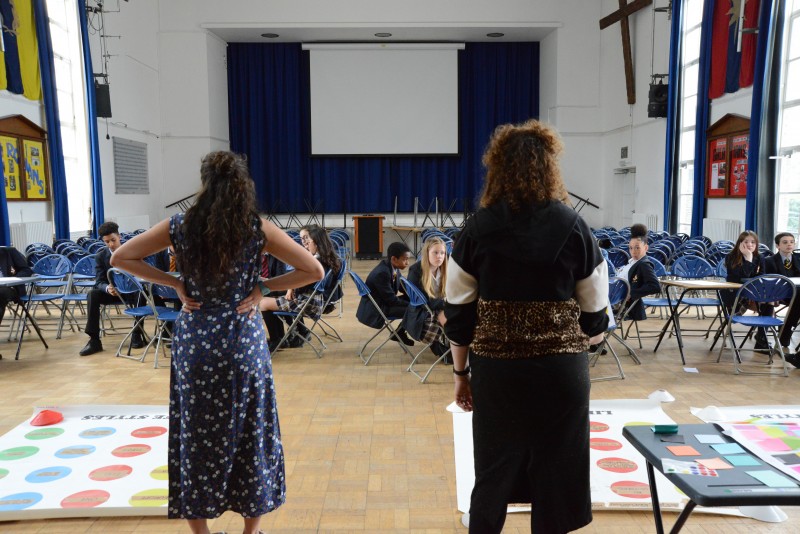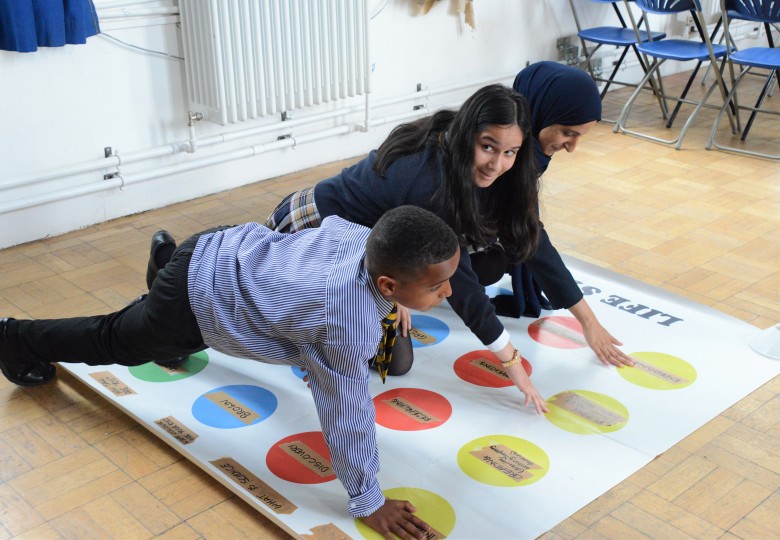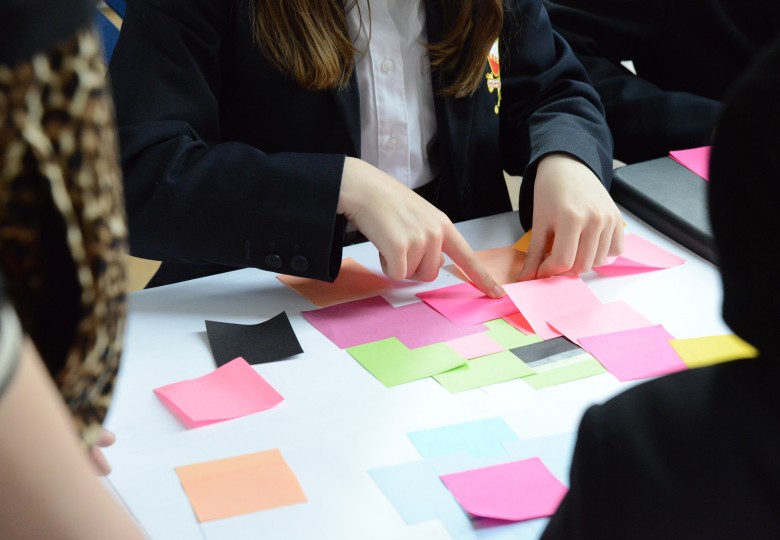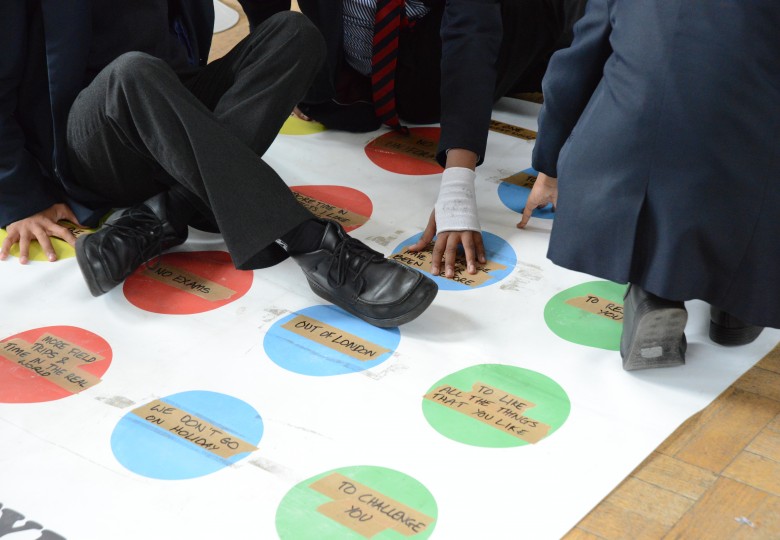
The MRC Laboratory of Medical Sciences (LMS) has recently gained planning permission for our new building that will begin construction in Autumn 2019. As the building goes up, 300 metres of hoarding will surround the perimeter of the construction site facing the playing fields of our neighbouring school, Ark Burlington Danes Academy (BDA). This hoarding is, also, the site of a creative community engagement project that the Grants, Engagement and Communications team (GECo) at the LMS have been facilitating. We have been working with a group of BDA’s Year 7, 8 and 9 students, LMS researchers and public artist, Julia Vogl. The participants have been working together over the past few weeks in a series of workshops facilitated by Julia to create a design concept for the hoarding that both represents the students and reflects the research that will be conducted in the new LMS building.
Julia’s work is described as social sculpture and public art that intends to capture and reflect the community in which the artwork is located. Her works are created using various forms of data collection and engaging visualisation for the local community to further interact with. To accomplish this for our hoarding project, the workshops were used to collect information from our researchers and the BDA students for Julia to incorporate into the final design.
The first workshop on 8 July focused on asking the students to consider what makes a good question as research often centres itself on asking the right ones; a key aspect that drives innovation. Julia explored this theme through a series of activities which enabled the students to reflect on whether the traits they possess are controlled by their genetics or their environment; a theme reflected throughout a lot of LMS research, and what would be the right questions to ask to figure this out.
The students were then split into groups with our researchers and tasked with creating two multiple choice questions that they would like to ask their fellow students and the researchers at LMS. These two questions were answered simultaneously and presented via differently coloured ink and a stamp with a unique symbol – each colour and each stamp symbol corresponded to an answer choice. This exercise was used to introduce how intersections of data can be expressed and presented to convey complex information. Julia further explored the concept of data visualisation, drawing on our researchers for the approaches they use in their work and then extrapolating this to concepts of how there are many ways in which data can be presented to prioritise different aspects such as aesthetics, clarity or engagement.
Our second workshop on 15 July got the students to delve deeper into these challenges of creating useful, interesting questions and brainstorming different approaches to displaying their data. Using the multiple-choice questions from the previous workshop, Julia created column headers for Twister mats with the coloured dots below representing each of the answers. Groups of students then played the game using their limbs to answer all the questions demonstrating everyone’s intersections of opinions in a very physical and visual manner.
This data was collected by our researches and represented with coloured sticky notes in a table. The groups were then tasked with rearranging their data in whatever way they wanted to. From this exercise, we were able to gather a wide range of different approaches that the students took to present their group’s opinions. Some preferred to take a more scientific approach and organised their sticky notes in tables or grouped similar answers together by colour, whereas others went for a completely different approach creating more artistic creations out of the notes.
The interpretations of these tasks and the questions themselves will be used by Julia to create the questions that will be given to the students of Ark Burlington Danes Academy and the LMS researchers over the coming months. She will then use the data collected from these questions to determine what the hoarding design will look like. The hoarding is planned to go up in Autumn 2019 as construction work commences. At this point, Julia and LMS researchers will return to the school to create the final hoarding design that will capture masses of information about everyone involved.
Written by Roween Rawat





